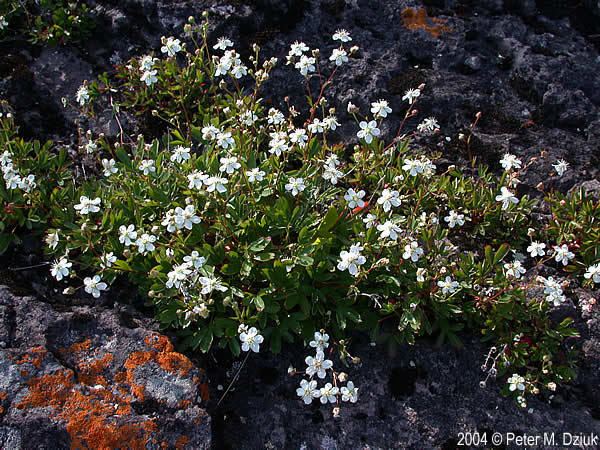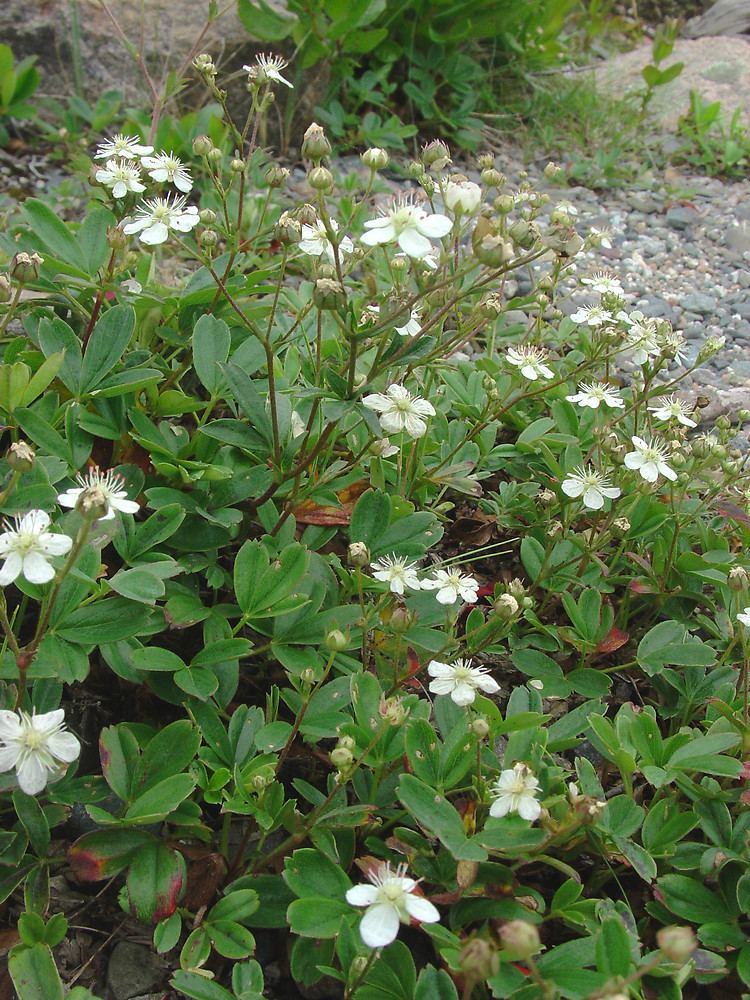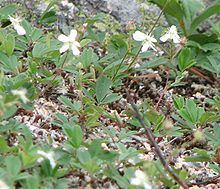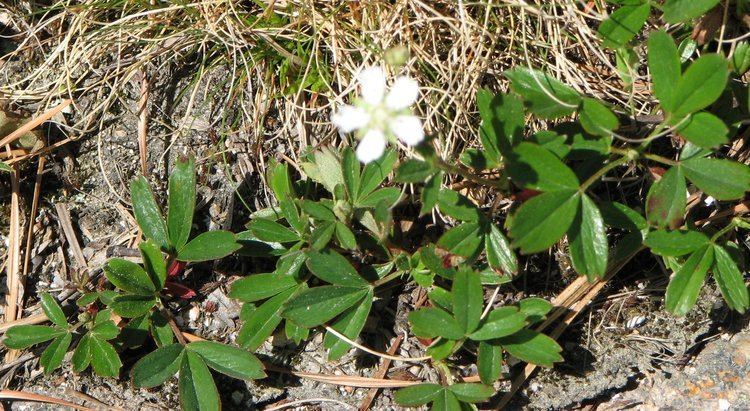Kingdom Plantae Family Rosaceae Genus Sibbaldiopsis
Rydb. Higher classification Sibbaldiopsis | Order Rosales Subfamily Rosoideae Scientific name Sibbaldiopsis tridentata Rank Species | |
 | ||
Similar Rosaceae, Drymocallis, Chamaerhodos, Ivesia, Dasiphora | ||
Sibbaldiopsis is a genus in the plant family Rosaceae. This genus only contains a single species: Sibbaldiopsis tridentata, formerly Potentilla tridentata. Commonly, its names include three-toothed cinquefoil, shrubby fivefingers, and wineleaf. Systemic phylogenetic work has placed S. tridentata within Sibbaldia as Sibbaldia retusa.
Contents

History
Sibbaldiopsis tridentata was first described by William Aiton, but later corrected by Per Axel Rydberg.

The species had been called Potentilla tridentata, but because of genetic analysis, it was discovered that the plant was closer to the boreal species Sibbadlia procumbens.

Sibbaldiopsis tridentata has sometimes been cited as Potentilla retusa, as it is much older, despite having yellow flowers. In addition, poor specimens of Sibbaldiopsis tridentata resemble Sibbaldia procumbens more than Sibbaldiopsis tridentata itself.
Habitat

Sibbaldiopsis tridentata prefers dry and acidic soil, usually on rocky or gravelly shores that have access to a lot of sun. It is often found on shale outcrops. The species is located all over the central to eastern American states, with disjunct populations extending down the Appalachian Mountains. The species also lives in the Canadian provinces east of and including Alberta, as well as Greenland. In Nova Scotia, the species is very common in the center of the Annapolis Valley and around cliffs or rocky outcrops. The southernmost known populations are located in Georgia and North Carolina, and occupy high-elevation rock outcrops and grassy balds.
Sibbaldiopsis tridentata is listed as endangered in 5 US states.
Characteristics

Sibbaldiopsis tridentata is a short evergreen perennial plant, which thrives in clusters and can grow up to ten inches. Its leaves are compound and trifoliate, usually growing at the base in an alternating pattern, each leaflet growing up to an inch-and-a-half in length and a half-an-inch across. The leaflets are oblanceolate with a truncated tip possessing three teeth. These leaves are retained in winter, but often with a red coloring.
Its branches are herbaceous and pubescent, but its roots are woody.

Its flowers are small and white, radial, and arranged in a compound bracteate cyme, possessing five sepals and five petals with several stamens and a few pistils. The individual flowers resemble flowers from the genus Potentilla.
Its blooms last up to three months, between June to August. Eventually, the triangular sepals fold up and develop tiny, hairy brown seeds.
